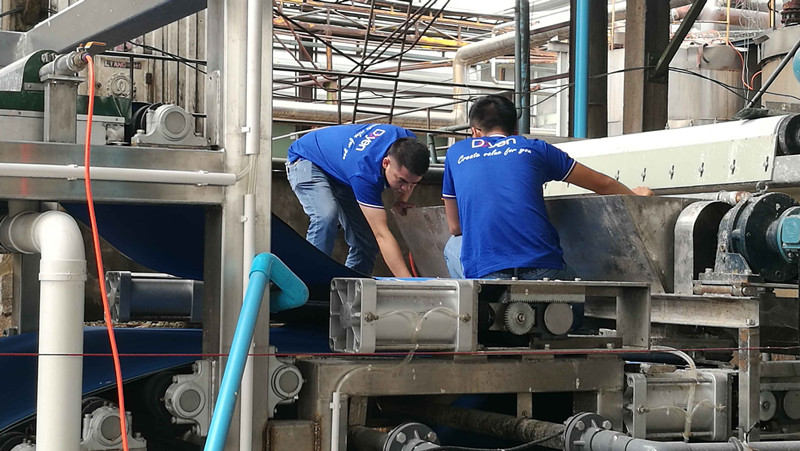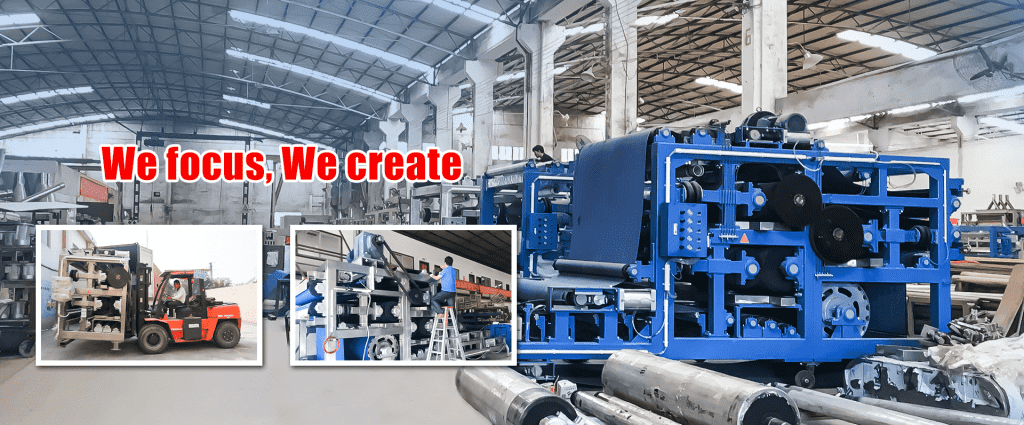

Tel:
+86-757-8633-0278
Email:doyen@doyenchina.com
Fax:+86-757-86287390
Address:Room 201, Building No. 24, Yicui Rose Garden, No. 2, Jihua 7 Road, Chancheng District, Foshan City, Guangdong Province, China 528000.
At present, the problems of sludge disposal methods bring heavy burden to sewage treatment. Sludge disposal has developed from being only a unit of sewage treatment in the past to an important link that has to be given priority in the design and operation of sewage treatment plant. After the development of harmless and resource-based sludge treatment, it will enter the reduction development stage.
It is a big problem for the sludge produced by papermaking wastewater treatment because the sludge production of papermaking wastewater treatment system is larger than other wastewater.
The characteristics of papermaking sludge are as follows:
Generally, the sludge produced in the treatment of papermaking wastewater is divided into two parts: 1. Pulp discharged from the workshop; 2. Residual sludge of biochemical treatment system.
There are three directions for papermaking sludge:
1、 Papermaking sludge can be reused in papermaking workshop
There are a lot of fibers in papermaking wastewater. In the process of wastewater treatment, some fibers are left in sludge, so they can be reused after treatment. At this time, it should be noted that biochemical sludge cannot be reused. The treatment process is as follows: sludge is screened, desanded, and then pumped to paper machine for papermaking. Because the fiber in the sludge is small, the quality of the paper page may be reduced in the recycling process, and the paper machine is easy to break. It is better to recycle it to the paper machine with lower speed to make low-grade corrugated paper.

2、 Paper mill sludge can be treated by pressure filtration
In general, sludge conditioning is carried out before pressure filtration.
The pulp discharged from the sludge workshop has a high fiber content, so it can achieve a better dehydration effect by adding an appropriate amount of polyacrylamine before entering the paper-making sludge dehydrator; while the sludge discharged from the biochemical treatment system can be added with an appropriate amount of polyaluminium chloride, ferric chloride, etc. according to the situation, and used in combination with polyacrylamine. However, the general paper mill will mix the two kinds of sludge together for treatment.
The physicochemical sludge containing fiber in the pretreatment and the surplus sludge produced by the biochemical treatment system are gravity concentrated in the sludge concentration tank, then dehydrated by the paper-making sludge dehydrator and transported out for disposal. The supernatant and filtrate of sludge thickening tank are discharged into the sewage collection system of the plant. A large number of sludge produced by papermaking wastewater will turn into treasure if it can be used reasonably after treatment.
First of all, papermaking sludge needs to be treated by sludge concentration tank. Sludge concentration is a process of using gravity sedimentation to increase sludge concentration. After the sludge concentration is increased, the utilization rate of flocculant will be increased accordingly, but the high sludge concentration should be avoided, resulting in the blockage of sludge pipeline.
Before entering into mechanical dehydration, the sludge needs to be added with flocculant for chemical conditioning to form the best floc. Different types of sludge produced by different papermaking processes need to be added with different types of flocculants. The commonly used inorganic flocculants are aluminum sulfate, polyaluminium chloride, ferric chloride, polymeric ferric sulfate, etc. The common polymer flocculant is polyacrylamide. When inorganic flocculant is used alone, due to the small floc and low mechanical strength, the sludge will leak with the filtrate under the pressure of filter belt, the dewatering effect is poor, and the sludge recovery rate is low. The use of cationic polyacrylamide alone can achieve better sludge dewatering effect, but the cost is higher. Therefore, if inorganic flocculant is combined with organic polymer flocculant, it can achieve better effect and reduce the cost of sludge dewatering. The type and dosage of flocculant can be determined by experimental method.
After chemical conditioning, sludge must be dehydrated mechanically. As the operation cost and post-treatment cost of sludge dewatering account for a large proportion of the whole sewage treatment cost, it is very important to choose energy-saving and efficient dewatering equipment. In contrast, the belt filter press dehydrator has the advantages of less investment, automatic control and continuous operation, low energy consumption, high dehydration efficiency, easy management, low maintenance cost, low noise, and less chemical dosing. Therefore, it is recommended to select paper-making sludge dehydrator for dehydration equipment. The pressure filtration process of the paper-making sludge dehydrator is as follows: the sludge passes through the gravity dehydration area first, then to the pressure dehydration area, and finally to the pressure dehydration area. After three steps, the dry sludge cake is produced.
According to the data provided by a paper mill, the moisture content of paper-making sludge is reduced to 75% ~ 85% after being pressed and filtered by a paper-making sludge dehydrator. At this time, the mud cake is transported out for final disposal.

dig
3、 Incineration treatment of papermaking sludge
The final disposal of sludge can choose suitable sludge utilization plan according to the local actual situation. Sludge utilization should meet the strict environmental health standards, and can not cause new environmental hazards. Combustion can be selected, which can not only recover heat, but also reduce the area of waste stacking.
Due to the large amount of sludge produced in the treatment of papermaking wastewater, it is of great significance to select a reasonable treatment and utilization method for the development of enterprises and the environment.

Doyen specializes in providing belt press equipment for the Southeast Asian market. Welcome to visit our workshop, according to the actual situation of your company, develop a more scientific dehydration program.Welcome to joyce@doyenchina.com or visit https://www.doyenchina.com.
May-13-2020
admin

 +86-757-8633-0278
+86-757-8633-0278 doyen@doyenchina.com
doyen@doyenchina.com Sitemap
Sitemap